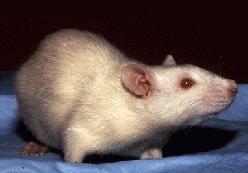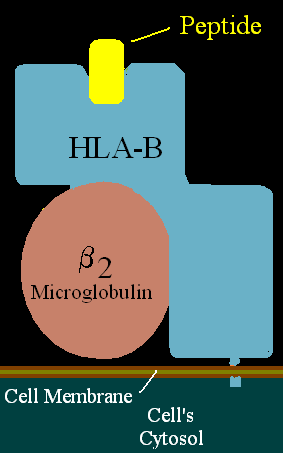Related Research Articles

Cholera is an infection of the small intestine by some strains of the bacterium Vibrio cholerae. Symptoms may range from none, to mild, to severe. The classic symptom is large amounts of watery diarrhea lasting a few days. Vomiting and muscle cramps may also occur. Diarrhea can be so severe that it leads within hours to severe dehydration and electrolyte imbalance. This may result in sunken eyes, cold skin, decreased skin elasticity, and wrinkling of the hands and feet. Dehydration can cause the skin to turn bluish. Symptoms start two hours to five days after exposure.

Poliomyelitis, commonly shortened to polio, is an infectious disease caused by the poliovirus. Approximately 75% of cases are asymptomatic; mild symptoms which can occur include sore throat and fever; in a proportion of cases more severe symptoms develop such as headache, neck stiffness, and paresthesia. These symptoms usually pass within one or two weeks. A less common symptom is permanent paralysis, and possible death in extreme cases. Years after recovery, post-polio syndrome may occur, with a slow development of muscle weakness similar to that which the person had during the initial infection.

Systemic scleroderma, or systemic sclerosis, is an autoimmune rheumatic disease characterised by excessive production and accumulation of collagen, called fibrosis, in the skin and internal organs and by injuries to small arteries. There are two major subgroups of systemic sclerosis based on the extent of skin involvement: limited and diffuse. The limited form affects areas below, but not above, the elbows and knees with or without involvement of the face. The diffuse form also affects the skin above the elbows and knees and can also spread to the torso. Visceral organs, including the kidneys, heart, lungs, and gastrointestinal tract can also be affected by the fibrotic process. Prognosis is determined by the form of the disease and the extent of visceral involvement. Patients with limited systemic sclerosis have a better prognosis than those with the diffuse form. Death is most often caused by lung, heart, and kidney involvement. The risk of cancer is increased slightly.

Tuberculosis (TB), also known as the "white death", or historically as consumption, is an infectious disease usually caused by Mycobacterium tuberculosis (MTB) bacteria. Tuberculosis generally affects the lungs, but it can also affect other parts of the body. Most infections show no symptoms, in which case it is known as latent tuberculosis. Around 10% of latent infections progress to active disease which, if left untreated, kill about half of those affected. Typical symptoms of active TB are chronic cough with blood-containing mucus, fever, night sweats, and weight loss. Infection of other organs can cause a wide range of symptoms.

Gout is a form of inflammatory arthritis characterized by recurrent attacks of a red, tender, hot and swollen joint, caused by the deposition of needle-like crystals of uric acid known as monosodium urate crystals. Pain typically comes on rapidly, reaching maximal intensity in less than 12 hours. The joint at the base of the big toe is affected (Podagra) in about half of cases. It may also result in tophi, kidney stones, or kidney damage.

Sjögren syndrome or Sjögren's syndrome is a long-term autoimmune disease that affects the body's moisture-producing glands, and often seriously affects other organ systems, such as the lungs, kidneys, and nervous system.

Hepatitis C is an infectious disease caused by the hepatitis C virus (HCV) that primarily affects the liver; it is a type of viral hepatitis. During the initial infection period, people often have mild or no symptoms. Early symptoms can include fever, dark urine, abdominal pain, and yellow tinged skin. The virus persists in the liver, becoming chronic, in about 70% of those initially infected. Early on, chronic infection typically has no symptoms. Over many years however, it often leads to liver disease and occasionally cirrhosis. In some cases, those with cirrhosis will develop serious complications such as liver failure, liver cancer, or dilated blood vessels in the esophagus and stomach.

Chikungunya is an infection caused by the Chikungunya virus (CHIKV). Symptoms include fever and joint pains. These typically occur two to twelve days after exposure. Other symptoms may include headache, muscle pain, joint swelling, and a rash. Symptoms usually improve within a week; however, occasionally the joint pain may last for months or years. The risk of death is around 1 in 1,000. The very young, old, and those with other health problems are at risk of more severe disease.
Spondyloarthropathy or spondyloarthrosis refers to any joint disease of the vertebral column. As such, it is a class or category of diseases rather than a single, specific entity. It differs from spondylopathy, which is a disease of the vertebra itself, but many conditions involve both spondylopathy and spondyloarthropathy.
Women's health differs from that of men's health in many unique ways. Women's health is an example of population health, where health is defined by the World Health Organisation as "a state of complete physical, mental and social well-being and not merely the absence of disease or infirmity". Often treated as simply women's reproductive health, many groups argue for a broader definition pertaining to the overall health of women, better expressed as "The health of women". These differences are further exacerbated in developing countries where women, whose health includes both their risks and experiences, are further disadvantaged.

Laboratory rats or lab rats are strains of the subspecies Rattus norvegicus domestica which are bred and kept for scientific research. While less commonly used for research than laboratory mice, rats have served as an important animal model for research in psychology and biomedical science.
Pachydermoperiostosis (PDP) is a rare genetic disorder that affects both bones and skin. Other names are primary hypertrophic osteoarthropathy or Touraine-Solente-Golé syndrome. It is mainly characterized by pachyderma, periostosis and finger clubbing.
Felty's syndrome (FS), also called Felty syndrome, is a rare autoimmune disease characterized by the triad of rheumatoid arthritis, enlargement of the spleen and low neutrophil count. The condition is more common in those aged 50–70 years, specifically more prevalent in females than males, and more so in Caucasians than those of African descent. It is a deforming disease that causes many complications for the individual.
Adult-onset Still's disease (AOSD) is a form of Still's disease, a rare systemic autoinflammatory disease characterized by the classic triad of fevers, joint pain, and a distinctive salmon-colored bumpy rash. The disease is considered a diagnosis of exclusion. Levels of the iron-binding protein ferritin may be extremely elevated with this disorder. AOSD may present in a similar manner to other inflammatory diseases and to autoimmune diseases, which must be ruled out before making the diagnosis.

HLA-B39 (B39) is an HLA-B serotype. The serotype identifies the more common HLA-B*39 gene products.
Remitting seronegative symmetrical synovitis with pitting edema (or sometimes RS3PE) is a rare syndrome identified by symmetric polyarthritis, synovitis, acute pitting edema (swelling) of the back of the hands and/or feet, and a negative serum rheumatoid factor. If no underlying disorder can be identified (idiopathic RS3PE), this entity has an excellent prognosis and responds well to treatment.
Lupus headache is a proposed, specific headache disorder in patients with systemic lupus erythematosus (SLE). Research shows that headache is a symptom commonly described by SLE patients —57% in one meta-analysis, ranging in different studies from 33% to 78%; of which migraine 31.7% and tension-type headache 23.5%. The existence of a special lupus headache is contested, although few high-quality studies are available to form definitive conclusions.
International League of Associations of Rheumatology (ILAR) is an international body of the associations of Rheumatologists from around the world. It comprises partner organisations PANLAR, Paamerican League of Associations for Rheumatology, EULAR, European League against Rheumatism, APLAR, Asia Pacific League of Associations of Rheumatology and AFLAR, African League of Associations for Rheumatology. ILAR has taken leadership in the development of global consensus on the diagnosis of rheumatological diseases especially juvenile idiopathic arthritis It published the ILAR Journal.
The Pan-American League of Associations for Rheumatology (PANLAR) is a non-profit organization composed of rheumatology associations from North, Central, and South America. The organization's main objective is to promote and advance the knowledge, education, research, and care in the field of rheumatology in the Americas. The mission of PANLAR is to stimulate, promote, and support research, the prevention, treatment, and rehabilitation of rheumatic illnesses. (1).
Pedro L. Alonso, is a physician, epidemiologist, and researcher in diseases that affect vulnerable populations. Based on a multidisciplinary approach, his work focuses mainly on malaria, although he has also studied other infectious diseases. He served as the Director of the Global Malaria Programme at the World Health Organization between 2014 and 2022, and is currently Professor of Global Health at the Faculty of Medicine and Health Science-Hospital Clinic, at the University of Barcelona.
References
- ↑ Haq SA, Rasker JJ, Darmawan J, Chopra A (April 2008). "WHO-ILAR-COPCORD in the Asia-Pacific: the past, present and future". Int J Rheum Dis . 11 (1): 4–10. doi: 10.1111/j.1756-185X.2008.00321.x .
- ↑ Rasker JJ, Freddy Arnauts LJ (July 2005). "The "New" International League of Associations for Rheumatology". J Rheumatol (Editorial). 32 (7): 1177.
- ↑ Chopra A (Jun 2012). "The WHO ILAR COPCORD Latin America: consistent with the world and setting a new perspective". J Clin Rheumatol . 18 (4): 167–9. doi:10.1097/RHU.0b013e31825d929b. PMID 22653622.
- ↑ "Over 4 mn Indians could be living with chronic joint pain". indianexpress.com. Retrieved 2016-11-03.